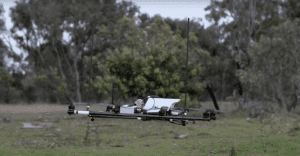
Australian researchers fitted a UAV with a custom-built miniature receiver and antenna to provide real-time information on radio-tracked wildlife.
Researchers at The Australian National University (ANU) and The University of Sydney developed a radio-tracking drone to locate radio-tagged wildlife. Lead researcher Debbie Saunders from the ANU Fenner School of Environment and Society said the drones have successfully detected tiny radio transmitters weighing as little as one gram. The system has been tested by tracking bettongs at the Mulligan's Flat woodland sanctuary in Canberra.
The small aerial robot will allow researchers to more rapidly and accurately find tagged wildlife, gain insights into movements of some of the world's smallest and least-known species, and access areas that are otherwise inaccessible, said Saunders. We have done more than 150 test flights and have demonstrated how the drones can find and map the locations of animals with radio tags.
The new system, funded by an ARC Linkage Project Grant and Loro Parque Foundacion, has been built and tested during the last two and a half years with Robert Fitch and his team at the University of Sydney. The robot consists of an off-the-shelf drone or unmanned aerial vehicle (UAV) as well as custom-made receivers used to map wildlife live on a laptop.
Early indications are that the drones could save a huge amount of time, said ANU Associate Professor Adrian Manning. If you have two operators working, and they can put the drone up in two bursts of 20 minutes, they can do what would take half a day or more to do using ground methods.

